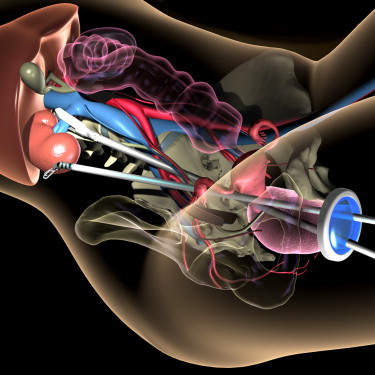Surgery is a daunting prospect. The thought of another human-being rummaging around in your insides is enough to turn anybody a bit pale with worry. Oh- and as an added bonus- the chances are, you are going to be left with a lovely scar to commemorate the event.
Well actually, that may not necessarily be true…
Pushing the boundaries of existing minimally-invasive technologies, surgeons are currently attempting the amazing feat of being able to complete certain procedures without the need for incisions. Via, shall we say, naturally existing access routes within the body.
Yes: it is what you are thinking.
The rectum, vagina, urethra and also the mouth are all channels utilized in NOTES (Natural Orifice Transluminal Endoscopic Surgery) in order for doctors to gain access to internal areas needing to be operated on.
The basic principle of NOTES has been an established means for diagnostic tests and simple therapies for a while- for example, inserting a camera into the throat to better view of internal structures (known as endoscopy). Now however, this technology is being explored in an exciting new capacity.
The potential to be able to complete full surgical procedures through already-present orifices in the body, means that new openings do not have to be created and therefore surgeons can try to avoid putting patients through the physical trauma of being cut open. Instruments, including a camera, can be inserted into these sites, allowing for surgeries to be performed in an incredibly minimally invasive way.
When compared with conventional laparotomy (standard open surgery, requiring a substantial incision into the abdomen) and laparoscopy (minimally invasive surgery, which uses small incisions into the abdomen, followed by the insertion of instruments into the body via ports), NOTES comes with a range of potential benefits.
The major advantages can mostly be attributed to the lack of an external wound site. This key achievement of NOTES means that the patient does not have to suffer the additional pain of wound-healing; does not have the risk of developing an incisional hernia and crucially; has reduced risk of surgical site infection.
Post-operative infection is one of the most common complications of surgery and can be deadly; by taking away an external healing site it severely reduces the chances of germs getting to the surgical site and creating a nasty infection.
Added to this, there could also be a reduced requirement for anaesthesia and shorter hospital stays too. But inherently unique to this surgery, is that it is ‘scarless’. This is even to the extent that on occasions when another camera is needed to be inserted from the outside, a very small incision is made into the belly button, in such a location whereby the cut will be hidden within folds of the skin.
Research and training are currently in progress to help propel NOTES to its full potential. With this technology already proving its feasibility in human trials, mainly in the field of general surgery- from removal of the appendix to biopsies to the treatment of intestinal cancers- it may not be too long before this technique establishes itself as a significant evolutionary step in modern surgical methods.
Photo credit: TopNews.in


A daunting prospect? Rummaging around inside? Heh, you wouldn’t have liked last week’s episode of Hannibal where the bad guy performed extensive organ removals on an awake but pain-anestheticised victim tied to his surgical table.
On the plus side the show is still child-friendly. Not a single mention, thought, or reference to tobacco anywhere in its first 11 episodes so far….
– MJM